kottke.org posts about photography
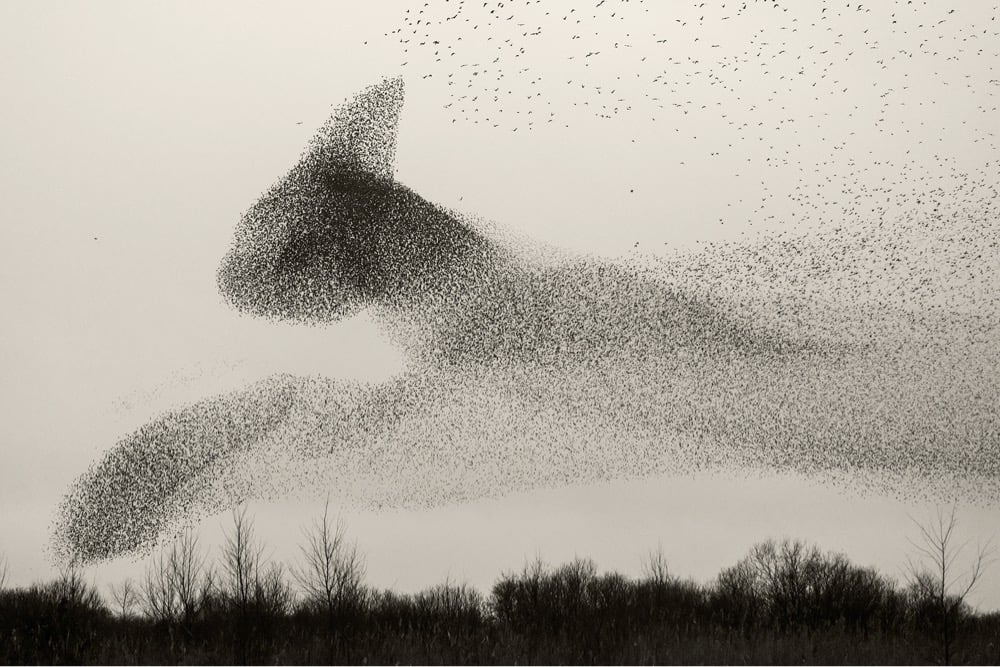

For his project Black Sun, Danish photographer Søren Solkær travelled all over Europe to capture the murmurations of migrating starlings.
The starlings move as one unified organism that vigorously opposes any outside threat. A strong visual expression is created — like that of an ink drawing or a calligraphic brush stroke — asserting itself against the sky. Shapes and black lines of condensation form within the swarm, resembling waves of interference or mathematical abstractions written across the horizon. At times the flock seems to possess the cohesive power of super fluids, changing shape in an endless flux: From geometric to organic, from solid to fluid, from matter to ethereal, from reality to dream — an exchange in which real time ceases to exist and mythical time pervades.
These photographs are also available on Instagram and in book form from Solkær’s website. (via ny times)
Over a period of four years and after thousands of miles of driving, Eric Tabuchi photographed the backs of semi-trailers with letters of the alphabet on them, eventually compiling all 26 letters. Here’s the first dozen:

(via present & correct)



For his Solar Power Series, photographer Tom Hegen aerially photographed solar power plants in France, Spain, and the US. It’s not an accident that some of these look like flowers and plants — the compact geometry to ideally capture solar power is similar in both instances.
In a single hour, the amount of power from the sun that strikes the Earth is more than the entire world consumes in a year. Having this in mind, renewable energy sources could be the key to combating climate change.
What does transforming towards more sustainable sources of energy look like?
(via colossal)


#nyc is photographer Jeff Mermelstein’s collection of photos he’s taken on the streets of NYC of text messages on people’s phone screens. From a review of the book at LensCulture:
At once detached and intimate, we are offered a collection of fragmentary texts that register the daily life events and feelings of a city’s occupants, a raw vox pop assortment of broken and interrupted and incomplete messages. We watch users reading, texting and even editing on their phones. There are texts about break ups, declarations of love, dreams, lusts, illnesses, affairs, abortion, pregnancy, death, sexual proclivities, money, as well as recipes, cooking, dirty shower curtains and roach traps. Some messages remain unfathomable and enigmatic: “The nun said, ‘That’s OK…”
I wonder about the privacy aspect of this, but it’s always fascinating to see how other people communicate.

The European Space Agency’s Solar Orbiter recently took 25 images of the Sun from a distance of 46 million miles that, when stitched all together, form the highest resolution photo of the Sun (and its corona) ever created.
The high-resolution telescope of EUI takes pictures of such high spatial resolution that, at that close distance, a mosaic of 25 individual images is needed to cover the entire Sun. Taken one after the other, the full image was captured over a period of more than four hours because each tile takes about 10 minutes, including the time for the spacecraft to point from one segment to the next.
In total, the final image contains more than 83 million pixels in a 9148 x 9112 pixel grid. For comparison, this image has a resolution that is ten times better than what a 4K TV screen can display.
You can zoom in on the image here to see how remarkably detailed it is.

Stunning drone photo of cherry trees blossoming at a tea plantation in Fujian, China taken by afun阿方. This looks like a still frame from an animated movie…just stunning.

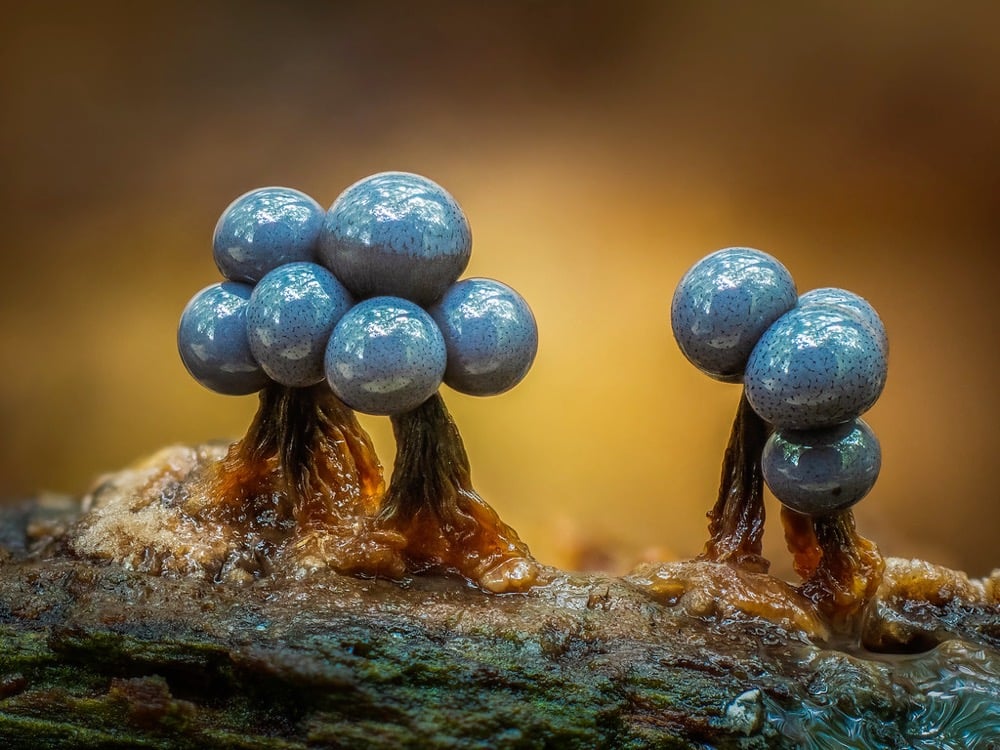


I have been a fan of slime molds ever since I read about them in Steven Johnson’s Emergence; they are fascinating. From a NY Times excerpt of Johnson’s book:
The slime mold spends much of its life as thousands of distinct single-celled units, each moving separately from its other comrades. Under the right conditions, those myriad cells will coalesce again into a single, larger organism, which then begins its leisurely crawl across the garden floor, consuming rotting leaves and wood as it moves about. When the environment is less hospitable, the slime mold acts as a single organism; when the weather turns cooler and the mold enjoys a large food supply, “it” becomes a “they.” The slime mold oscillates between being a single creature and a swarm.
In his ongoing series of photographs, Barry Webb captures these bizarre and exotic creatures. Yet another example of not having to look off-world to find alien life. (via colossal)


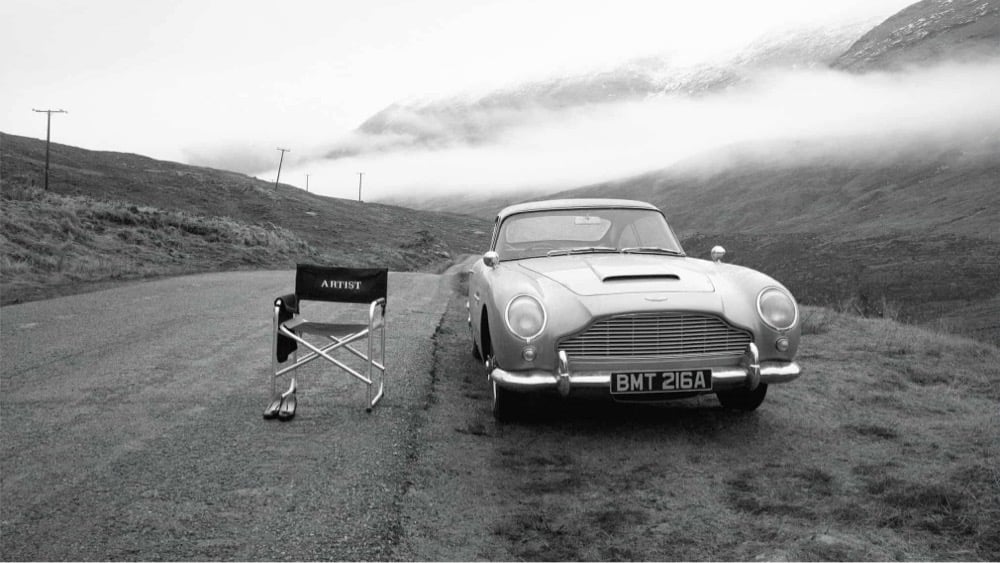

It’s no surprise that the cinematographer responsible for some of the beautifully shot films ever made is also an avid and talented photographer. Roger Deakins, who won Oscars for his work on Blade Runner: 2049 and 19171 and shot almost all of the Coen brothers’ films, has published a book of his black & white photography from the last five decades: Roger A. Deakins: Byways.
Although photography has remained one of Roger’s few hobbies, more often it is an excuse for him to spend hours just walking, his camera over his shoulder, with no particular purpose but to observe. Some of the images in this book, such as those from Rapa Nui, New Zealand and Australia, he took whilst traveling with James. Others are images that caught his eye as walked on a weekend, or catching the last of the light at the end of a day’s filming whilst working on projects in cities such as Berlin or Budapest, on Sicario in New Mexico, Skyfall in Scotland and in England on 1917.
Artnet has an interview with Deakins about the collection and his photography.
Looking back through these photos, I wondered if my eye had changed, and I don’t think it has, really. The photographs I took back then are really quite simple; they’re pared down in terms of what’s in the frame. I guess that’s what I’ve been doing ever since.



The Instagram account Geomorphological Landscapes features some of the more beautiful and unusual natural and geological features our planet has to offer, including inselbergs, caves, murmurations, ice balls, clouds, and river meanders. The account doesn’t stick to strictly natural wonders, but whatever they post is usually worth a look. (via dense discovery)

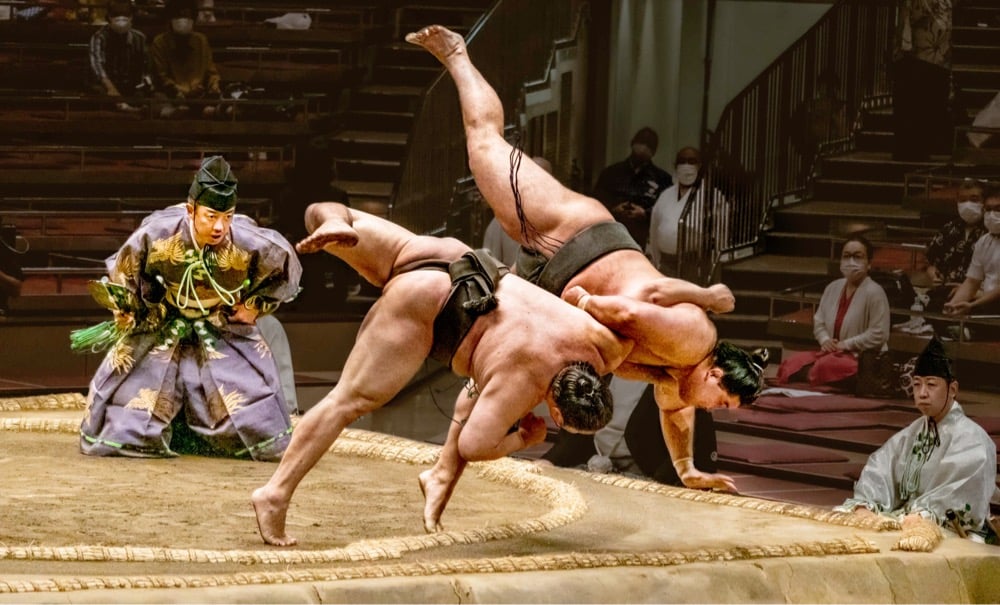


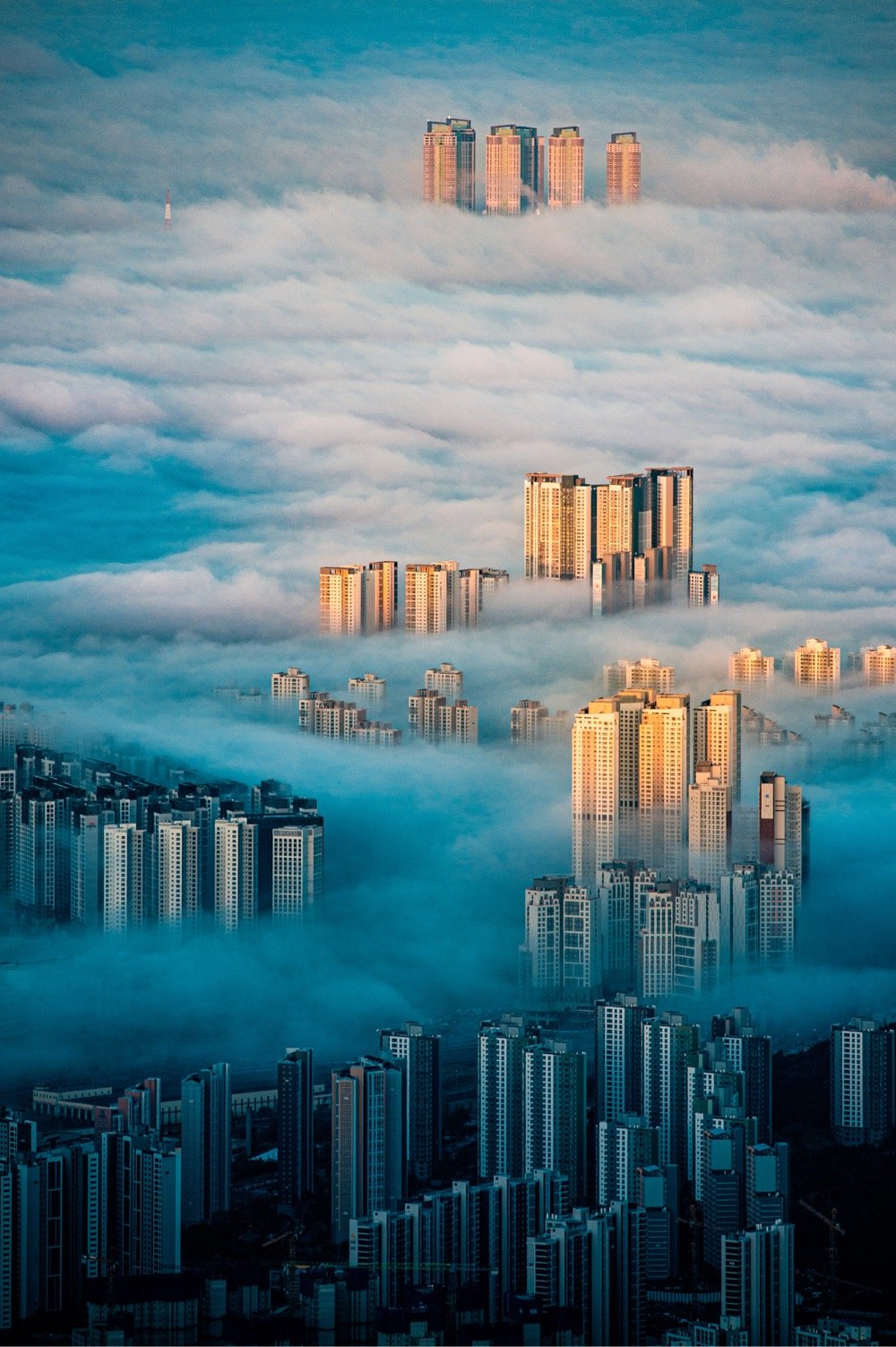
The Sony World Photography Awards have announced the winners of their national and regional competitions. As usual with these awards, there’s a bunch of great work in here. I’ve selected a few of my favorites above — from top to bottom, Sergio Carrasco, Chin Leong Teo, Kazi Arifuzzaman, Thanh Nguyen Phuc, and Wonyoung Choi. View the rest of the winning images here. (via colossal)

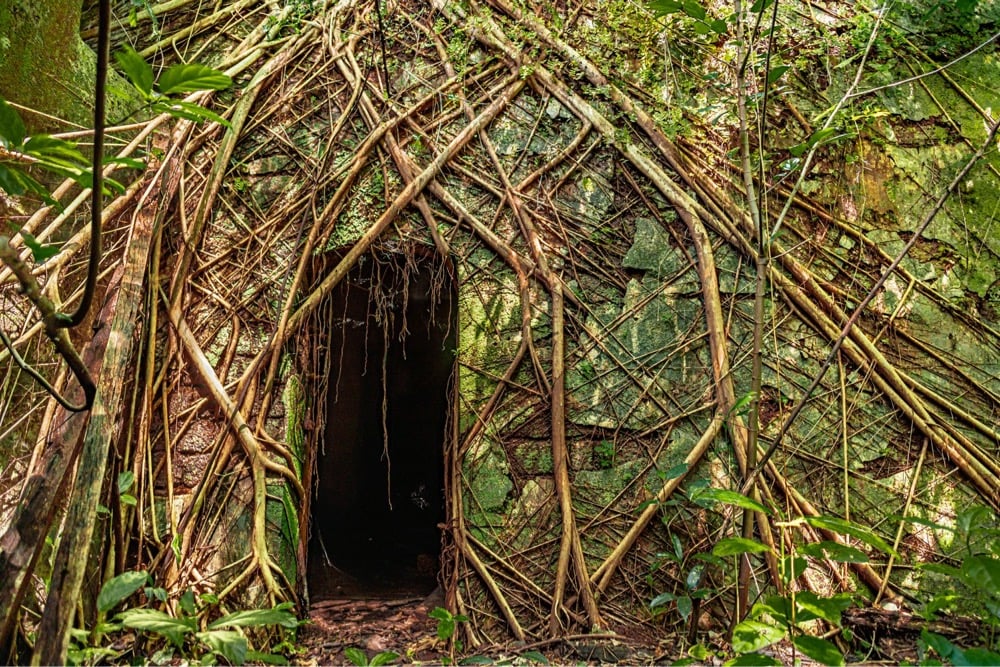


The winning photos in the World Nature Photography Awards for 2021 were recently unveiled and it is always such a pleasure and balm to see how well these photographers capture the beauty of the natural world and the creatures who dwell in it. As always, I’ve included some of my favorites above — from top to bottom, photos by Vince Burton, Gautam Kamat Bambolkar, Chin Leong Teo, and Amos Nachoum. (via in focus)




For his project For What It’s Worth, Dillon Marsh created 1:1 scale visualizations of the minerals extracted from South African mines and placed them in photos of the mines themselves. From top to bottom above, a sphere of the 284,000 metric tonnes of copper extracted from the O’Kiep mine, a sphere of the 9500 metric tonnes of gold from the Free State Gold Field, a sphere of 3850 metric tonnes of platinum extracted in total in South Africa since 1924, and a gemstone of the 7.6 million carats of diamonds extracted from the Koffiefontein Mine.
The diamond in particular, which you might not be able to see in that photo (it’s on a vertical stand right in front of the massive hole), underscores just how tiny the amount of material pulled out of these massive mines is, especially when you factor in all the manpower, machinery, injuries, fatalities, and environmental damage related to mining. All that for a bit of shine. (via clive thompson)




All of the winners and shortlisted entries of the 2021 International Landscape Photographer of the Year contest look fantastic, but I managed to pull out a few favorites. From top to bottom, photos by Tanmay Sapkal, Wayne Sorensen, Takashi Nakazawa, and Tom Putt.
You can view the winners online, or in PDF form.





Using AI image processing software, Hidreley Diao creates photorealistic portraits of familiar cartoon characters. The one of Moe from The Simpsons is kind of amazing — he’s got the look of a long-time character actor who’s developed so much depth over the years that he starts getting bigger roles and everyone’s like, this guy is actually kind of enigmatic and attractive and fantastic.
You can find more of his efforts on Instagram, where he also makes AI-assisted portraits of people we don’t have photos of (e.g. Michelangelo) and fictional people (e.g. Hercules and the Statue of Liberty).
See also the “Reverse Toonification” of Pixar Characters and What Homer Simpson Would Look Like in Real Life.
In major US metropolitan areas like Boston and Chicago that see significant winter snowfall, there’s a tradition of saving one’s shoveled-out street parking space with an object or objects that indicate to others that they should park elsewhere. After a big January storm, the Chicago Tribune posted a collection of photos of the best “parking dibs” in the city.


See also The Pittsburgh Parking Chair.

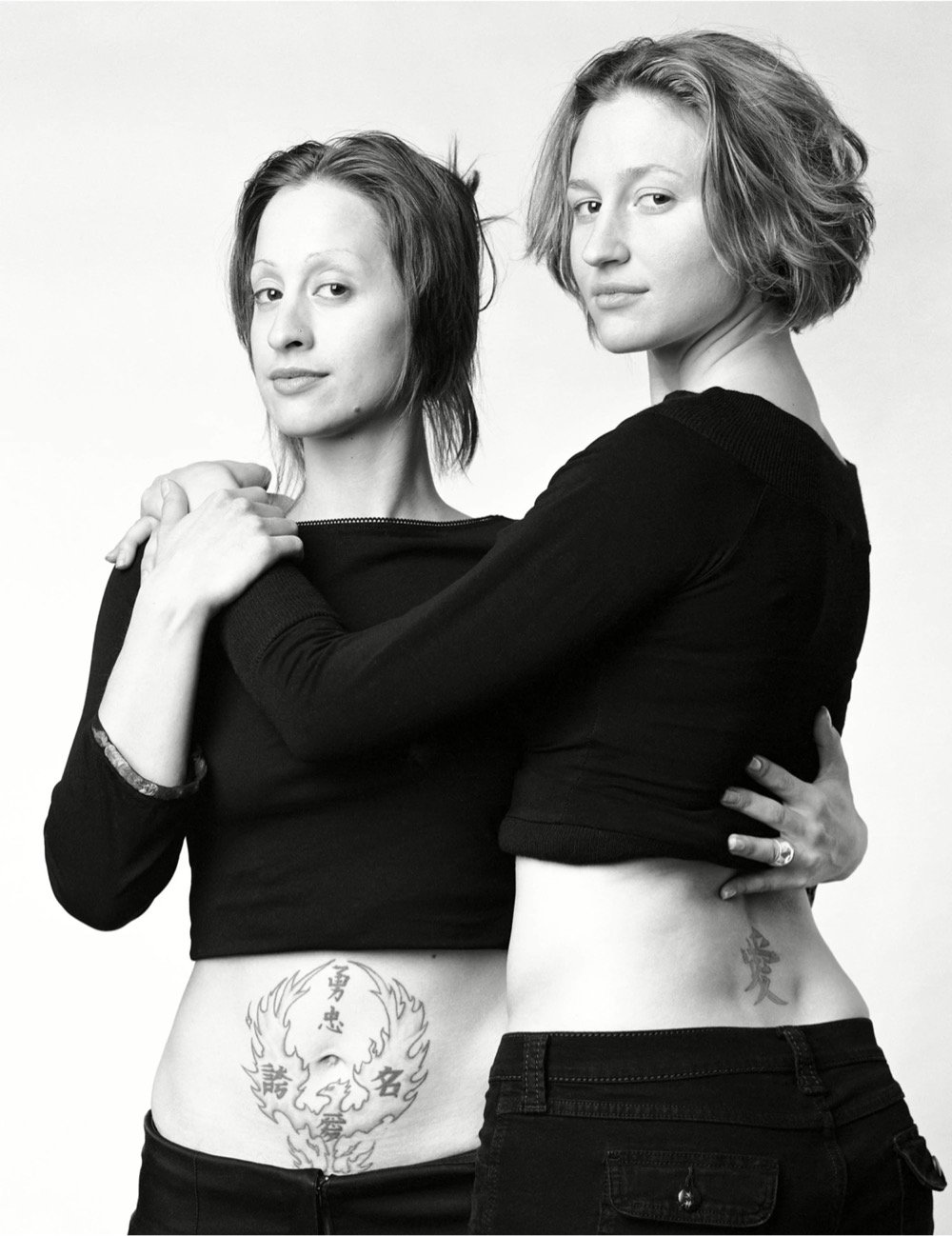



For his project “I’m not a look-alike!”, François Brunelle finds and photographs pairs of people who are unrelated but who look like twins.
See also Find Your Museum Doppelganger and Identical Strangers. (via life is so beautiful)



The winning entries in the Environmental Photographer of the Year for 2021 highlight the ways in which our planet’s climate is changing and how humans are (and are not) adapting to those changes. From top to bottom, photos by Kevin Ochieng Onyango, Simone Tramonte, and Michele Lapini. (via dense discovery)



Brazilian photographer Luisa Dörr travelled to Bolivia and photographed the members of ImillaSkate, a group of Aymara and Quechua women who skateboard, often in traditional cholita clothing. From a slideshow of photos by Dörr in El Pais (translated from Spanish by Google):
I traveled to Cochabamba in September and was struck by the strong prejudice that exists in Bolivian society against indigenous people. There are medical cholitas or lawyers there who radically change their way of dressing if they go to the city and you hardly see young cholitas. It is a culture that is being lost. However, these women, beyond emboldening girls with sport, show their pride in being cholitas.
Here’s a short documentary about ImillaSkate with English subtitles and you can follow more of Dörr’s work on Instagram. See also the Girls of Guanabara.

Using a composite of 25 different shots done over a period of 12 minutes in his backyard, amateur astrophotographer Andrew McCarthy created this stunning image of Comet Leonard. From PetaPixel:
Processing comet images is a challenge because even in the span of 12 minutes, the comet drifts across the frame relative to the background stars,” McCarthy tells PetaPixel. “Due to the comet’s motion, it has to be stacked differently. I tell the software to stack the images based on the comet position and star positions separately, which is then combined together to produce an image with the comet and stars both sharp.
See also this image of Leonard and McCarthy’s colorful photo of a full moon.




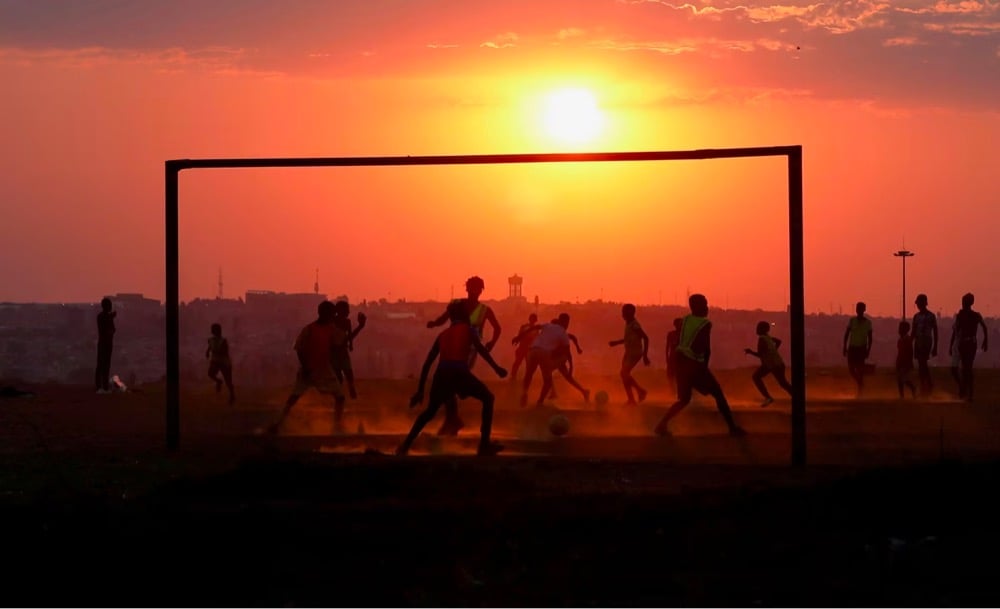






It is difficult to separate 2021 from the previous year — Covid, social & political unrest, and the climate crisis bind them together in my memory. I think, at the beginning of this year, many people thought it was going to be better year than the last, but instead it was 2020: The Sequel. Meaghan Looram summed the year up succinctly for the NY Times:
The year 2021 opened with the promise of vaccines, and the belief that we would all return to “normal” after the tumultuous year of the pandemic. But the year instead took off with an insurrection in the U.S. Capitol, and saw a summer of carefree gatherings derailed by a fast-spreading virus. Governments fell, democracies were challenged, and climate-related destruction was unleashed, all while the casualties of the pandemic continued to amass. The vaccine saved some lives, but human passions, hopes and fears did their usual work to create a year that was anything but calm, and is ending with the prospect of a new variant upending plans once again.
As I do every year, I went through a bunch of photos-of-the-year lists and picked up some favorites; they are embedded above. The first photo, taken by amateur photographer Shawn Triplett with his iPhone in the aftermath of the Kentucky tornados, wasn’t included in any of the lists but it was probably my favorite of the year. There’s something about the framing, the emptiness, the destruction, and the screen-mediated chaos vs. order that is the perfect metaphor for how things are feeling right now.
You can check out more of the year’s best photos here:
The photos above were taken by (from top to bottom): Shawn Triplett, satellite imagery, Shannon Stapleton, Jouni Porsanger, Siphiwe Sibeko, Callaghan O’Hare, Don Seabrook, Alexey Pavlishak, Emilio Morenatti, Anonymous, and Doug Mills.





Oh, Tim Flach takes wonderful photos of birds, birbs, and everything in-between (including an avian dead ringer for Hercule Poirot). He recently published a book of this work called Birds and you can of course keep up with his stuff on Instagram. (via jodi)



Check out some of the best aurora borealis and aurora australis photos taken in 2021 in the results of the 2021 Northern Lights Photographer of the Year competition.1 My three favorites (embedded above) were taken by Larryn Rae, Marc Adamus, and Frøydis Dalheim. (thx, caroline)




The winners of the 2021 Red Bull Illume Image Quest photography contest have been announced. You can take a look at the winners, runners-up, and finalists in the contest — so much impressive work here. Photos above are by Will Saunders, Rod Hill, Andreas Busslinger, and Adrien Petit. (via in focus)


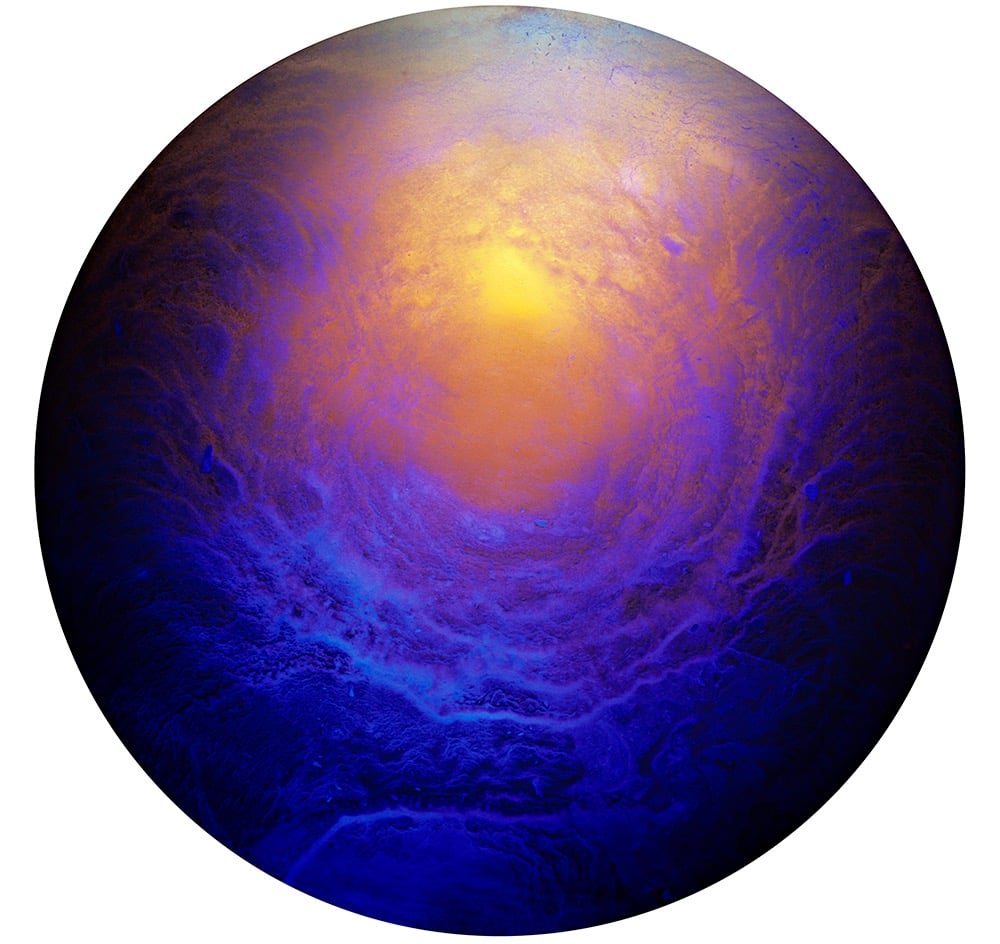

For his series Vanishing Spirits: The Dried Remains of Single Malt Scotch, photographer Ernie Buttons photographed the creatively lit bottoms of glasses emptied of their single malt Scotch whisky. The results look like alien worlds.
These remind me a lot of Christopher Jonassen’s frying pan worlds and Nadine Schlieper’s & Robert Pufleb’s photos of pancakes that look like moons. (via moss & fog)


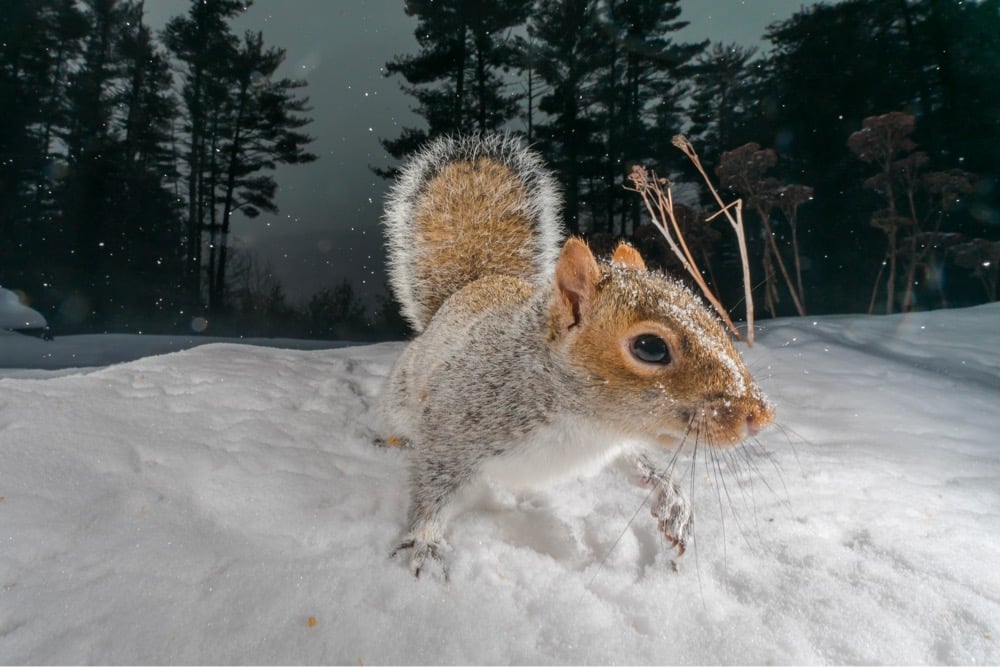
Last winter, Carla Rhodes captured some scenes of the animal life underneath her bird feeder. Rhodes is a wildlife conservation photographer, so the photos are good and she made certain to do the right thing with her feeder:
Ethical considerations were at the forefront of this project. This included hanging the feeder in a tree away from house windows. If not cared for properly, bird feeders can be a vector for diseases, such as salmonella. To avoid this issue I regularly raked beneath the bird feeder (and turned the soil below), rotated the feeder to different branches, occasionally allowed the feeder to be empty, and regularly disinfected the feeder with dish soap and dilute bleach solution.
(via colossal)
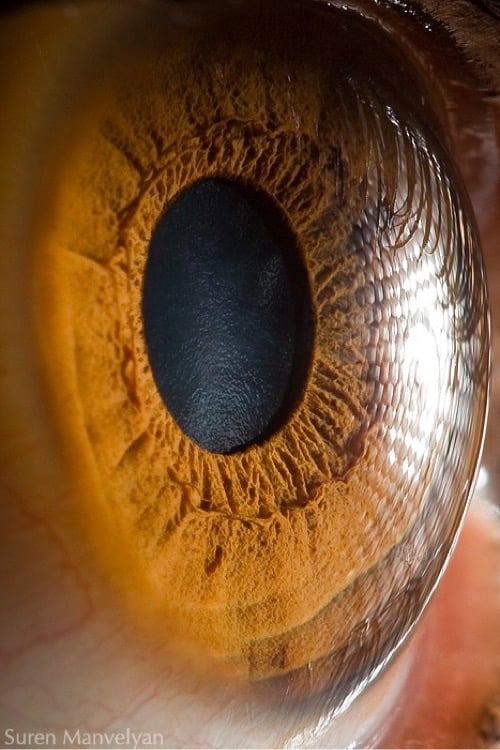




I have featured Suren Manvelyan’s ultra-macro photos of human eyes on the site before, but since I think about them all the time, here they are again. I just wish the images were bigger. Manvelyan has also shot a bunch of animal eyes at close range — this is a llama eye:


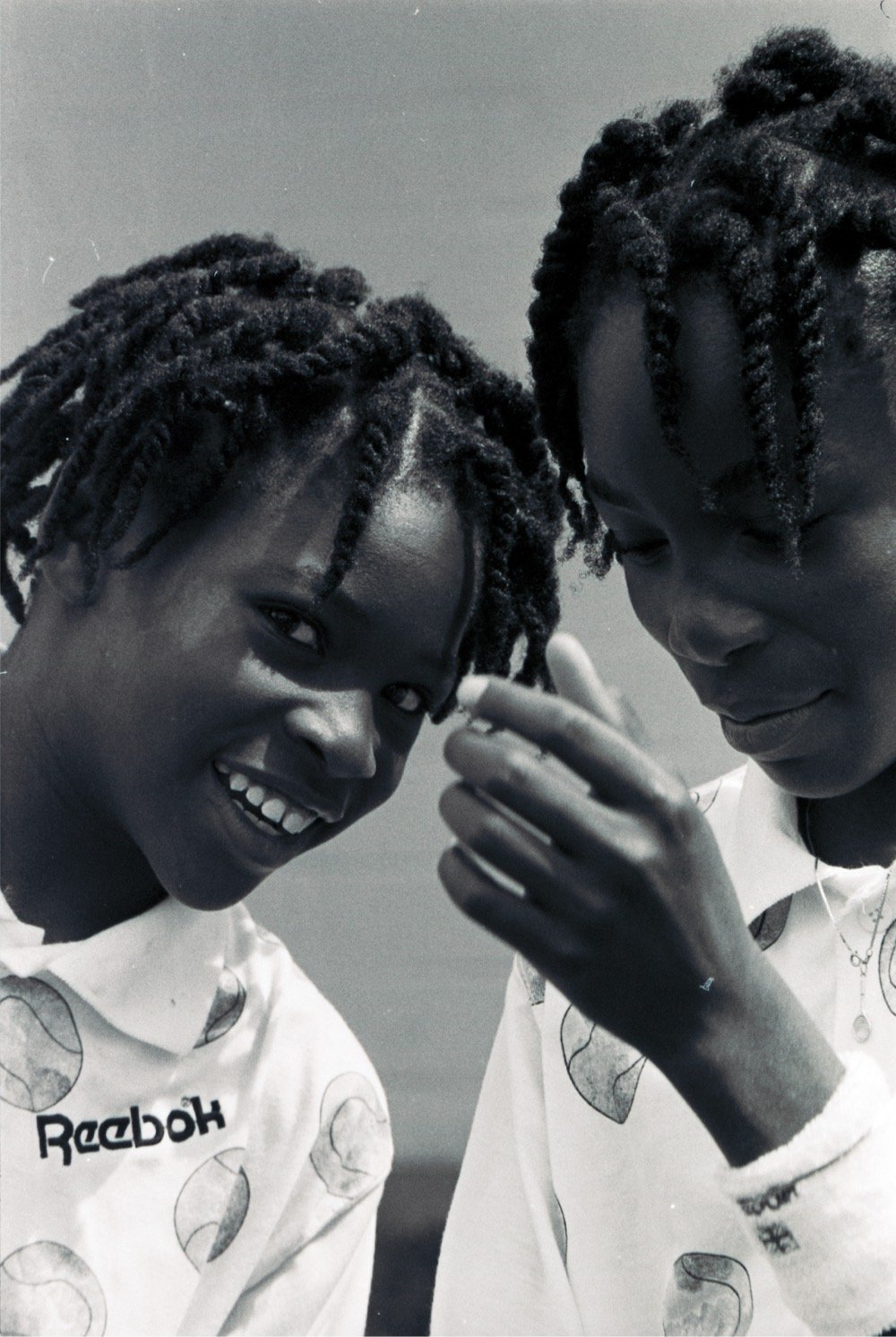
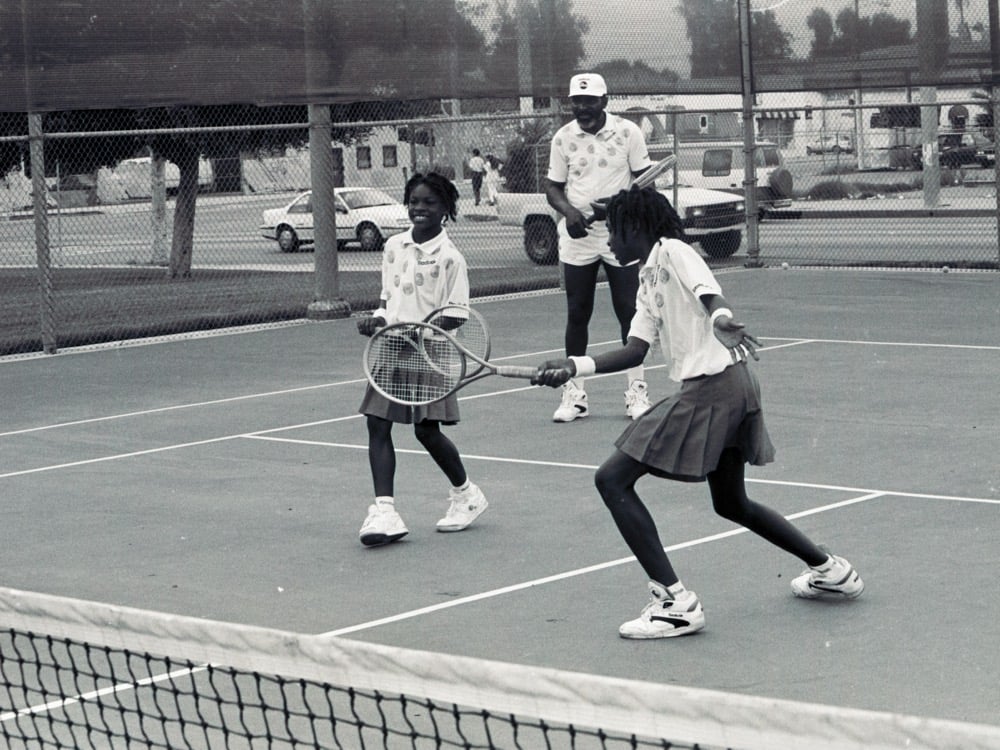
The Smithsonian’s National Museum of African American History and Culture is home to a collection of photographs taken by Rod Lyons in 1991 of Venus and Serena Williams practicing tennis at the ages of 12 and 10 on a tennis court near their home in Compton. Their father Richard is in the photos as well, coaching his daughters. Patrick Sauer talked to Lyons about the photos for Smithsonian Magazine:
“Where I was sent to shoot an up-and-coming tennis player was interesting because [the sport’s] ’70s [to] ’80s boom was over, so [tennis] wasn’t that popular overall, and you certainly didn’t see Black people in Compton out there playing. But other than that it was no big deal,” Lyons recalls. “I got there and started taking pictures of two young sisters named Venus and Serena, 12 and 10, taking lessons from their father, Richard. The practice session was disciplined and intense. Richard was really coaching ‘em up that day, but he wasn’t dictatorial, and [he] treated his daughters with kindness and respect.”
There’s another photo of the sisters from 1991 in this NPR piece, as well as some stories from locals about the Williams family:
Barbee was a 21-year-old limo driver and part-time tennis coach when Richard Williams invited him to train with his daughters.
“Tennis was a passion,” he says.
Barbee was a tennis prodigy himself, so when he faced Venus and Serena on the court, he had finally met his match.
“Man, it was unbelievable,” Barbee says. “Never seen nobody that good. It was something I’d never seen before in my life.”
Venus wasn’t even a teenager yet.
Training meant hitting hundreds of balls with enough force to break the strings on their racquets.
“Every other day, I was restringing my racquets,” he says. “My shoes, once a week. A hole right in my foot of my shoe. Used to tape them up.”
Here are still more photos from 1991 and you can find a photo of the sisters posing with Ronald and Nancy Reagan at Sports Illustrated.
King Richard, a biopic of Richard Williams produced by his daughters, takes place during this period of time, is now out in theaters and on HBO Max, and is getting great reviews.





AAP Magazine has announced the winners of their 21st annual photo competition. This year’s theme was “Colors” and I’ve embedded a few of my favorites above (from top to bottom: Miloš Nejezchleb, Vitaly Golovatyuk, Graham Earnshaw, Joanna Borowiec, and Pham Huy Trung).





The Street Photographers Foundation has announced the winners of the Street Photography Awards for 2021. What an amazing selection of photos — it was so hard to pick just a few favorites (embedded above). From top to bottom, Subhran Karmakar, Paul Kessel (like a Renaissance painting), Akib Amjad (so reminiscent of this iconic photo by Henri Cartier-Bresson), Andy Hann, and Dimitri Mellos. (via curious about everything)




After sorting through 13,000 photographs submitted by over 1300 photographers from all over the world, the winners of the very first Natural Landscape Photography Awards have been announced. A few of my favorite winners are embedded above; from top to bottom, Paul Hammett, Antonio Fernandez, Hans Strand, and Tobias Richter. Hammett’s shot of lightning striking the Matterhorn took 30 minutes of patience to capture:
Setting up my tripod as thunder boomed around me, hopes of getting an image turned to excitement as the storm moved over the Matterhorn.
I was briefly frustrated trying to nail focus and settings in the dark. Occasional flashes of nearby lightning helped me recompose, refine focus and adjust settings. But I cursed each of them as a missed opportunity to get a shot. Once happy with the camera set up, I could take time to fire off numerous 10 second exposures and just watch the show.
Each lightning strike gave me the shivers. When these two hit the summit, I knew I had something special in the camera.
(via colossal)
Newer posts
Older posts



















































































































Stay Connected